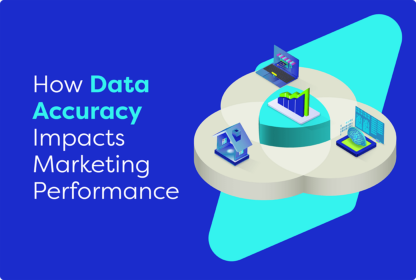“If your analytics person isn’t your favorite person in the room, if you’re a marketer, they need to become your favorite person.”
That was how Ryan McClurkin, chief analytics officer at JTV, one of the U.S.’s most prominent jewelry and gemstone retailers, answered PebblePost CEO Jacob Ross’s question, “What are the three fatal flaws of marketing measurement sabotaging our ROI?” at the CommerceNext retail and e-commerce conference last week.
Measuring marketing effectiveness remains one of the industry’s thorniest challenges, and today, more than ever, marketers are under pressure to show a good return on their investment.
We’re long past the days of measuring success based on top-of-funnel metrics like clicks alone. In this next marketing era, there are massive opportunities for marketers and their partners to attack this challenge. So, McClurkin and Ross came together at last week’s event to discuss measurement, attribution, and how leading marketers can best drive and demonstrate success amid a gripping paradigm shift.
“If you don’t think it’s working for you, it’s probably because you can’t measure it properly.”
McClurkin learned the hard way that not all traditional marketing measurement platforms measure. There are three measuring challenges that none of the platforms JTV used solved:
- Cost attribution or allocation: What is the cost to generate a benefit from media? “That gives you a very different perspective than the traditional way of, okay, I spent $100 grand, what did I get for it?” he said. “Look at your revenue and say, okay, I generated $2 million in revenue. What did it cost me and what were the marketing touchpoints?”
- Click-based or last-click-based attribution: “The marketing journey is not some last-touch attribution,” McClurkin said. “It is many touches across long periods of time, typically depending on the product that you’re selling and the consideration period that exists and how well you can build that customer journey.”
- The true ROAS is LVT: “So all of these marketing platforms and the way that your organization sits there and measures marketing is based on typically a ROAS, or even a CAC, right? The question is, what are [customers] worth, right? What’s that future revenue stream going to be worth? That’s the true return on ad spend.”
So, the zenith from a marketing measurement standpoint is really nailing down true attribution and LTV to show value to the brand’s organization, McClurkin said.
The Programmatic Direct Mail Difference
Of course, it’s easier to measure the impact of your marketing if you deploy tactics that are actually measurable.
One of them for JTV is Programmatic Direct Mail.
“It’s been an unbelievable tactic for us,” McClurkin said. “I actually know a lot of companies that have had a lot of success with Programmatic Direct Mail, but the ones that truly lean into it are the ones who can measure it properly.”
JTV’s partnership with PebblePost is pivotal because the brand can’t see when a customer or prospect picks up their postcard. But if that conversion eventually happens, PebblePost has the data.
“When you think about your attribution journey, and you’re generating an order and you’re looking across that customer’s lifetime, you can partner—and that’s just what we’ve done with PebblePost—and you can get that supplemental data to build into that customer journey to value that touch point the right way,” McClurkin added.
Marketing and analytics: a match made in heaven
Companies only want to invest in places they can prove value, which makes it all the more important to modernize your digital media measurement, McClurkin said.
JTV came to this realization after they decided to double their ad spend to invest in e-commerce. They soon realized the initial value was very small because they were using last-touch attribution. Out of necessity, the brand took a step back from its initial ad spend and measurement approach to rethink its strategy.
“What happens is you end up in this place where you get way more insight,” McClurkin explained. “Like if you’re seeing that you’re driving a high level of LTV out of something like Programmatic Direct Mail, you’re like, go invest more in that, right?”
This exercise resulted in the JTV marketing and analytics teams forging a stronger partnership.
“When you have hard data supporting the relationship between marketing and finance and the measurement side, and everybody’s on that same page, there’s a lot less friction that exists when it comes to expense control and all that kind of stuff,” he added.
McClurkin recommends a crawl-walk-run-sprint approach of sorts to brands looking to break out of last-touch attribution and improve their measurement. To hear about the four tiers along the path to better measurement, watch the full video of the CommerceNext discussion here.



